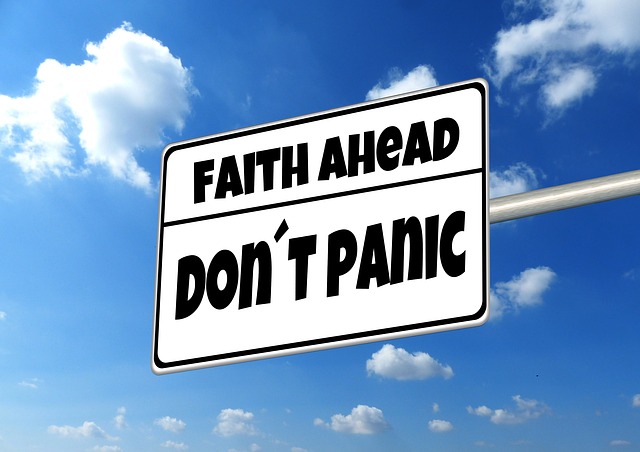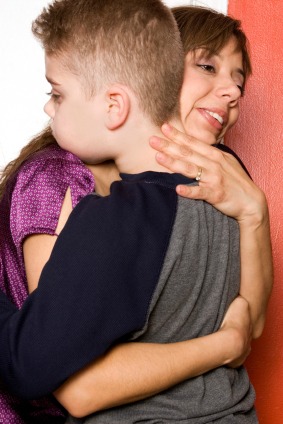Dealing with Panic Attacks: Help Your Child Cope or Halt an Episode
Dealing with panic attacks is a challenge that often plagues the lives of children with autism. Is your child having them, and what can you do to help?
"Ryan's" Story
“I think I’m dying,” Ryan said as he stood in front of the hospital receptionist.
“You’re not dying,” she quickly responded.
He wasn’t bleeding. He wasn’t fainting. He wasn’t unconscious. He had no visible symptoms other than a near certainty that he was dying.
Clearly, this receptionist knew exactly what was going on. She had probably seen this scenario played out many times.
Ryan was having a panic attack.
Mom and Ryan were relieved that he wasn’t dying, and they were soon able to go home, knowing Ryan was going to be okay. But for Ryan, the experience had been terrifying.

What are Panic Attacks?
Panic attacks are sudden, severe episodes of irrational anxiety, and even literal terror, with little to no reason for it that would be obvious to an observer. It’s different from regular anxiety, which is usually an ongoing state of mind. Panic attacks usually happen suddenly, and often fade just as suddenly.
Symptoms of a Panic Attack
Symptoms of a panic attack may include, but are not limited to:
- Heart palpitations
- Hyperventilation
- Difficulty breathing
- Muscle pain
- Tingling and/or numbness in the hands or fingers
- Dizziness or feeling of weakness
- Feeling of loss of control
- Sweating and/or chills
- Chest pain
- Terrifying thoughts that they will die
The physical symptoms are the body’s exaggerated symptoms of the body’s normal response to danger. The adrenaline rush causes increased heart rate and hyperventilation, as well as other symptoms.
Dealing With Panic Attacks
As challenging as panic attacks can be, there are ways we can help our children cope and even stop an episode in progress.
1. Recognize when you are dealing with a panic attack.
If you’re in the middle of a health crisis, and you think you’re dealing with a medical emergency, it’s vitally important that you head to the Emergency Room (ER) right away.
With that said, after a few trips to the ER, you may start to see a pattern emerge (i.e., panic attack diagnosis, if the problem is indeed a panic attack). After a few experiences like this, you’ll begin to recognize the difference between a panic attack and a real medical emergency.
And even after a couple of trips to the ER, this terrifying condition in disguise might fool you.
According to a number of expert sources, realizing that you are having a panic attack can go a long way towards ending the episode. 1
Understanding that it’s just a panic attack can calm your child down with the knowledge that they are not in danger, and that they are instead dealing with a severe form of anxiety.
2. Use soothing, comforting words.
Once you know you’re dealing with a panic attack instead of a medical emergency, comfort them with soft, soothing tones. Help them understand that they are having a panic attack, they are not dying, and they will get through this just fine. Tell them that although they are uncomfortable, they are not in danger, and this will pass.

3. Instruct them to breathe slowly and deeply.
This is one solution that has worked wonders for us. And United Healthcare has also identified slow, deep breathing as essential to calming down those suffering from panic attacks. 2
While I can’t promise that this will work for everyone, I can say that nearly every time we do this, the panic attack simply melts away.
We noticed that when the sufferer in our family is feeling a panic attack rising, the fear kicks in and he starts hyperventilating.
When they’re hyperventilating, the body is trying desperately to get more oxygen. But those quick breaths actually decrease the amount of oxygen their body is receiving.
That decreased oxygen supply will cause the adrenaline to increase as their body becomes more desperate for oxygen. Soon the sufferer is in a downward spiral, headed for a panic attack.
If they can possibly have the presence of mind to do so, have them breathe in though the nose and then exhale slowly through the mouth. If they can’t follow those instructions in their state of mind, just help them do the best they can. It may also help to open a nearby window for fresh air.
So far, this has worked to slow down and even stop a panic attack just about every time.
4. Consider H.A.L.T. for possible causes
H.A.L.T. stands for hungry, angry, lonely, tired.
It can be helpful to ask yourself or your child if they are hungry, angry, lonely or tired. Any of these conditions can trigger a panic attack. 3
Once you understand what is triggering the panic attack, you can fix the root problem and stop it before it gets worse.
5. Help them relax.
According to Mercy Care, helping your child relax their muscles can help in dealing with panic attacks. 4
Relaxing the muscles can also inadvertently result in slower breathing, which as I stated earlier, can also help to end a panic attack.
Mercy Care recommends starting with relaxing the fingers and toes, and working your way to the rest of the body.
It may be a good idea to practice this technique when all is well so that when a panic attack strikes, you and your child will know what to do.

6. Stay with your child during the panic attack.
Being alone can make the whole issue worse, and they need Mom or Dad there to support and help them with all the other suggestions listed earlier in this article. They need you there to tell them this is just a panic attack, to breathe slowly and deeply, to relax, and to give them whatever they might need.
Most of all, they need the moral support of knowing you’re there to help them through this terrifying ordeal.
Being Prepared for a Panic Attack
The above list of ways you can help your child with panic attacks are just to get you started.
For a more complete list, check out this article by My Health Alberta.
Being armed with these techniques for dealing with panic attacks can not only help our children cope, but also give them the reassurance that their parents are prepared and know what to do to help them when an episode strikes.
Disclaimer
The information contained in this article and on this website is not medical advice and should not be used as a substitute for seeing your own or your child's physician. You should always consult a medical doctor before considering any of the information on this website. It is highly recommended to visit a licensed physician regularly and follow their treatment plan for your child. If you have any specific questions about your child's health, see their physician or other healthcare provider. If you think your child might have any type of physical or medical condition, you should get help from your healthcare provider immediately. You should never delay, discontinue or disregard the medical treatment or advice from your own or your child's doctor as a result of anything contained on this website.
References
1. “Panic Attacks & Panic Disorder.” Cleveland Clinic, 12 February 2023, https://my.clevelandclinic.org/health/diseases/4451-panic-attack-panic-disorder.
2. "6 Signs of a Possible Panic Attack and How to Help Manage It." United Healthcare, https://www.uhc.com/news-articles/healthy-living/6-signs-of-a-panic-attack.
3. Bonvissuto, Danny. "Ways to Stop a Panic Attack." WebMD, 09 March 2025, https://www.webmd.com/anxiety-panic/ss/slideshow-ways-to-stop-panic-attack.
4. "8 Tips for Coping with Panic Attacks." Mercy Care, https://www.mercycare.org/bhs/employee-assistance-program/eapforemployers/resources/8-tips-for-coping-with-panic-attacks/.




New! Comments
Have your say about what you just read! Leave me a comment in the box below.